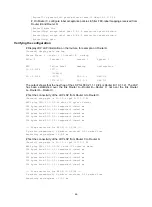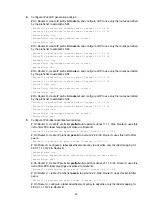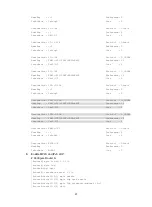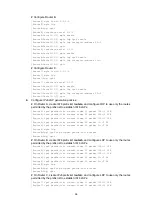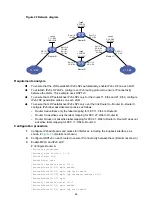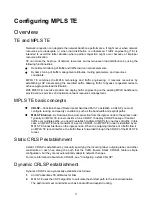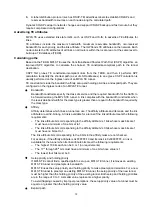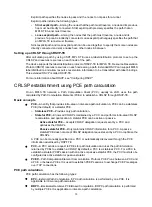
60
56 bytes from 21::1, icmp_seq=4 hlim=63 time=2.000 ms
--- Ping6 statistics for 21::1 ---
5 packets transmitted, 5 packets received, 0.0% packet loss
round-trip min/avg/max/std-dev = 1.000/2.200/3.000/0.748 ms
# Test the connectivity of the IPv6 LDP LSP from Router C to Router A.
[RouterC] ping ipv6 -a 21::1 11::1
Ping6(56 data bytes) 21::1 --> 11::1, press CTRL_C to break
56 bytes from 11::1, icmp_seq=0 hlim=63 time=2.000 ms
56 bytes from 11::1, icmp_seq=1 hlim=63 time=1.000 ms
56 bytes from 11::1, icmp_seq=2 hlim=63 time=1.000 ms
56 bytes from 11::1, icmp_seq=3 hlim=63 time=1.000 ms
56 bytes from 11::1, icmp_seq=4 hlim=63 time=1.000 ms
--- Ping6 statistics for 11::1 ---
5 packets transmitted, 5 packets received, 0.0% packet loss
round-trip min/avg/max/std-dev = 1.000/1.200/2.000/0.400 ms
IPv6 label acceptance control configuration example
Network requirements
Two links, Router A—Router B—Router C and Router A—Router D—Router C, exist between
subnets 11::0/64 and 21::0/64.
Configure LDP to establish LSPs only for routes to subnets 11::0/64 and 21::0/64.
Configure LDP to establish LSPs only on the link Router A—Router B—Router C to forward traffic
between subnets 11::0/64 and 21::0/64.
Figure 23 Network diagram
Requirements analysis
•
To ensure that the LSRs establish IPv6 LSPs automatically, enable IPv6 LDP on each LSR.
Router A
Router B
Router C
Loop0
1.1.1.9/32
100::1/128
Loop0
3.3.3.9/32
100::3/128
Ser1/1/0
10::1/64
Ser1/1/1
20::1/64
Ser1/1/0
10::2/64
Ser1/1/0
20::2/64
11::0/64
21::0/64
GE1/1/1
11::1/64
GE1/1/1
21::1/64
Router D
Loop0
4.4.4.9/32
100::4/128
Loop0
2.2.2.9/32
100::2/128
Ser1/1/1
30::1/64
Ser1/1/1
40::2/64
Ser1/1/0
30::2/64
Ser1/1/1
40::1/64

